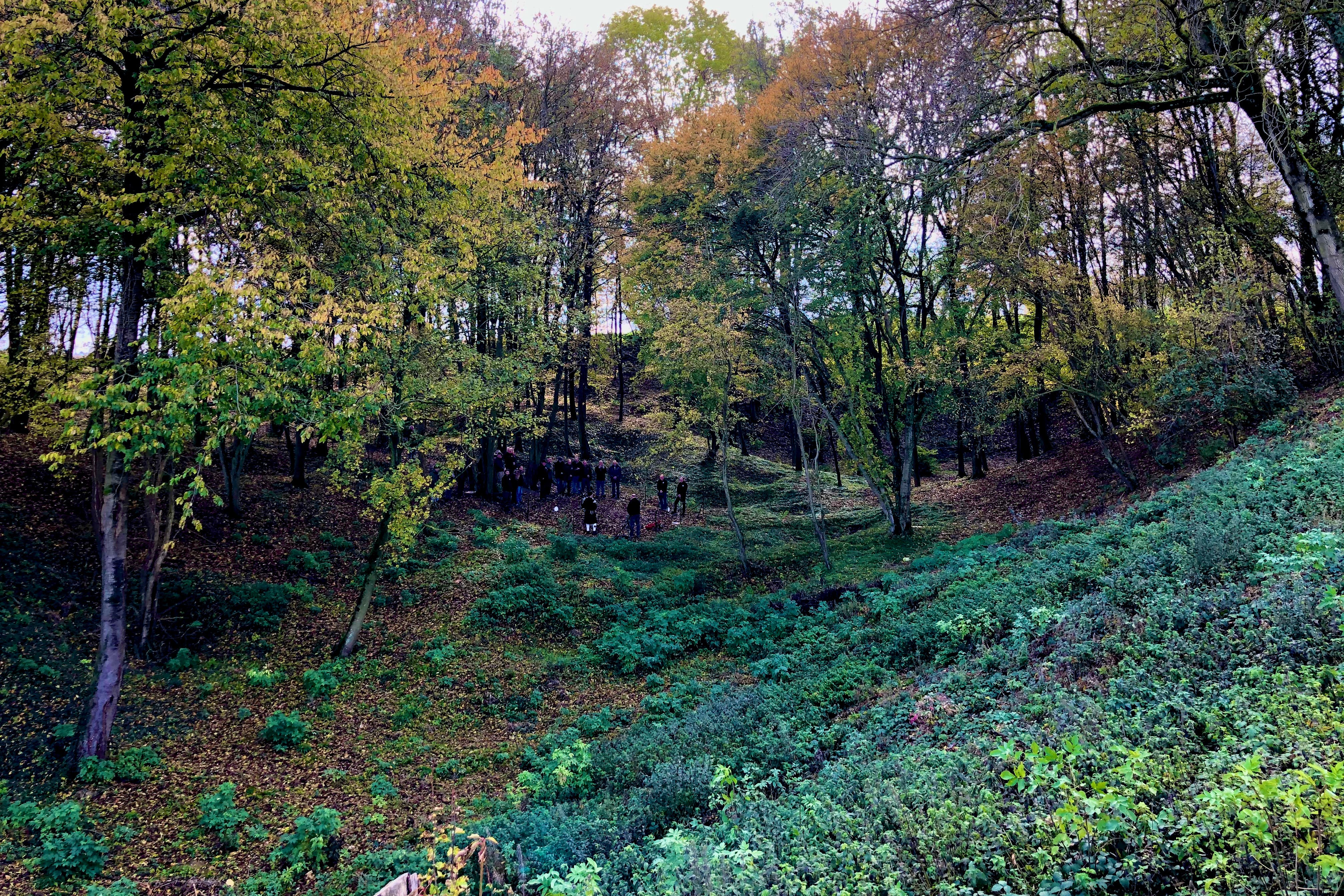First scientific study of 1916 war crater yields ‘significant’ new insights
Experts uncovered evidence revealing how German soldiers used the Hawthorn Ridge blast site to their advantage.
Your support helps us to tell the story
From reproductive rights to climate change to Big Tech, The Independent is on the ground when the story is developing. Whether it's investigating the financials of Elon Musk's pro-Trump PAC or producing our latest documentary, 'The A Word', which shines a light on the American women fighting for reproductive rights, we know how important it is to parse out the facts from the messaging.
At such a critical moment in US history, we need reporters on the ground. Your donation allows us to keep sending journalists to speak to both sides of the story.
The Independent is trusted by Americans across the entire political spectrum. And unlike many other quality news outlets, we choose not to lock Americans out of our reporting and analysis with paywalls. We believe quality journalism should be available to everyone, paid for by those who can afford it.
Your support makes all the difference.UK scientists have uncovered “exciting and significant” new insights into how German soldiers used a crater – created after a mine explosion by the British – to their advantage during the First World War.
The detonation of the Hawthorn Ridge, near the village of Beaumont Hamel in France, signalled the start of the Battle of the Somme on the morning of July 1 1916 – often described as the bloodiest day in the history of the British Army.
The blast took place 10 minutes before the whistles blew for the attack to begin at 7.30am.
The hope was that the bombardment would enable British troops to cross “no man’s land” – the ground between two opposing armies – and occupy German trenches.

But instead, it gave German soldiers time to take up defensive positions in the newly formed crater, leading to more than 57,000 British casualties – including 19,000 killed – on the first day of the battle.
Researchers have now discovered the remains of an unseen section of a German trench with barbed wire – known as a fire bay – in the 107-year-old crater.
They have also found evidence of a previously unknown shallow tunnel – believed to have been dug by the Germans towards the British lines – in the first scientific study of the Hawthorn Ridge blast site.
Study author Dr Jamie Pringle, a forensic geoscientist at Keele University, said: “The explosion of the mine was the very first action of the Battle of the Somme, intended to give Allied forces the upper hand.
“We found physical evidence for the first time of how German soldiers had consolidated part of the crater left behind after the explosion, and actually used it to their advantage as a new defensive position.”
Professor Peter Doyle, a military historian at Goldsmiths, University of London, who was part of the team, added: “The Germans had quickly mastered the art of capturing craters and used this to their advantage.
“Though they lost many men in the initial blast, the crater became a part of the German front line, meaning that the chance to break through the line here was lost.
“Our study has provided new evidence of the strongpoint the Germans built from the captured crater in the middle of no man’s land that doomed the British attack to failure.
“This reinforces the idea that blowing the mine 10 minutes early was a very bad idea.”
The research team, which also included experts from Staffordshire University, Atlantic Technological University, London South Bank University, Stoke-on-Trent Archaeology Service, Goldsmiths, University of London and Cotswold Archaeology, were given exclusive access to the site by the Hawthorn Ridge Crater Association, a charitable organisation tasked with protecting the site.
The team also found multiple impact holes from shells fired by the Allies and unearthed an unexploded British shrapnel artillery shell with its time-fuse still intact – thought to be among many that failed to blow up.
The experts discovered an empty ammunition box for a Vickers, a type of heavy machine gun that was widely used during both world wars.
Dr Kris Wisniewski, a lecturer in forensic science at Keele University, said the said the study of the “historically important crater” was “exciting and significant”.
He added: “Using drones with imaging cameras, we were able to image remotely a probable sap or shallow tunnel to the north west of the crater, showing the German mastery of no man’s land after the initial detonation.”
The researchers said a second mine was blown by British forces on November 13, forming a new crater.
This blast proved to be more effective, they said, helping them capture the ridge and the nearby Beaumont Hamel village.
The research is published in the Journal of Conflict Archaeology.
